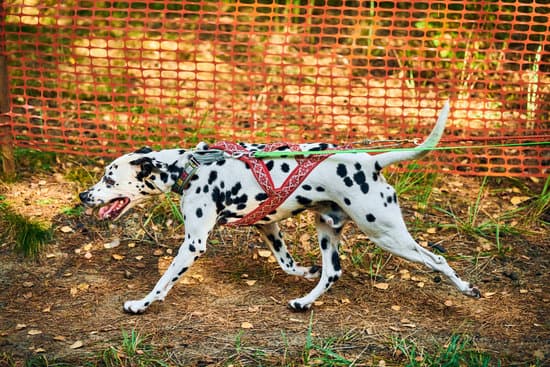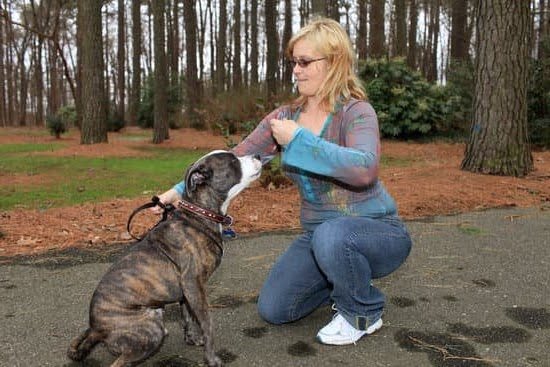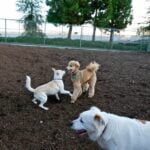Training dogs is a crucial aspect of their overall well-being and behavior. Without proper training, dogs can become unruly, disobedient, and even pose potential safety risks to themselves and others. Additionally, training provides mental stimulation for dogs, helping to prevent boredom and promote a healthier state of mind.
In this article, we will explore various aspects of dog training, from basic commands to specialized training options. Whether you are a first-time dog owner or have had dogs for years, understanding the importance of training and knowing what to train your beloved pets can greatly enhance your relationship with them.
One of the primary reasons why training is important for dogs is that it helps instill good behavior and obedience. Basic commands such as sit, stay, lie down, and come when called are essential for a well-behaved pet.
Training your dog in these fundamental commands not only ensures their safety but also enables you to communicate effectively with them in various situations. Moreover, a trained dog is more likely to listen and respond appropriately to your commands, making outings and interactions with other people or animals much smoother.
Another crucial aspect of dog training is house training or potty training. By teaching your furry friend where and when to eliminate waste properly, you can avoid messy accidents in your home.
Effective house training techniques will not only make life easier for both you and your pet but also contribute to their emotional well-being by establishing a sense of routine and cleanliness. We will delve into specific strategies and tips that can facilitate successful potty training in the following section.
Apart from basic obedience commands and house training, socialization plays a vital role in ensuring a well-rounded canine companion. Dogs need exposure to different people, animals, situations, and environments from an early age to develop good social skills.
Socializing your dog correctly helps prevent fear-based aggression or adverse reactions towards unfamiliar stimuli later on in life. In this article, we will discuss how to introduce your dog to new experiences and help them feel comfortable and confident in various social settings.
Training your dog is not only a means to teach them essential skills but also an opportunity for fun and bonding. Tricks and engaging activities provide mental stimulation and reduce boredom, leading to a happier, healthier dog.
Moreover, advanced obedience training can challenge both you and your canine companion, opening doors to new possibilities beyond the basic commands. In the following sections of this article, we will explore these aspects of training in greater detail, along with problem behavior solutions and specialized training options.
By recognizing the significance of training dogs and understanding what areas to focus on when training them, you can create a harmonious relationship built on respect, trust, and effective communication. From basic commands to advanced obedience to specialized skills, the world of dog training offers numerous opportunities for personal growth for both you and your furry friend. So let’s delve into the different aspects of dog training in order to unleash the full potential of our canine companions.
Basic Commands
Training your dog to follow basic commands is essential for their well-being and behavior. Not only does it make them more obedient, but it also helps create a strong bond between you and your pet. By teaching your dog these essential commands, you’ll have a well-behaved companion that can easily navigate various situations. Here are some of the basic commands every dog should know:
Sit
Teaching your dog to sit is one of the first and most important commands they should learn. It helps in controlling their impulsiveness and provides a foundation for other commands. To train your dog to sit, hold a treat near their nose and raise it slowly above their head while saying “sit.” As their head goes up following the treat, their backside will naturally lower onto the ground. Once they sit, reward them with the treat and praise.
Stay
The “stay” command is vital for keeping your dog safe in various situations and preventing them from running off or approaching potential dangers. Start by having your dog sit in front of you, then open your palm toward them while saying “stay” firmly and confidently. Take a step back, pause for a moment, then return to reward them if they stay in place. Gradually increase the duration and distance as they become more comfortable with staying.
Lie Down
“Lie down” is another useful command that helps manage your dog’s behavior when needed, particularly in crowded or busy environments. Begin by commanding your dog to sit, then hold a treat close to their nose while moving it downward between their paws. As they follow the treat with their nose, they will naturally lie down on their belly. Reward them with the treat and praise once they’ve successfully lain down.
Mastering these basic commands will establish fundamental obedience skills in your furry friend. Remember, consistency and positive reinforcement are key when training your dog. Make sure to use treats, praise, and patience to encourage them along the way. With time and practice, your pet will become a well-behaved and obedient companion.
House Training
Potty training is one of the most important aspects of training your dog, as it sets the foundation for a well-behaved and clean pet. Here are some effective techniques and tips to successfully potty train your dog:
- Establish a routine: Dogs thrive on routines, so establishing a consistent schedule for potty breaks is crucial. Take your dog outside first thing in the morning, after meals, before bedtime, and regularly throughout the day. Be consistent with timing and location to help your dog understand where they should go.
- Use positive reinforcement: When your dog eliminates in the appropriate spot, immediately praise and reward them with treats or verbal affirmation. Positive reinforcement helps associate going to the bathroom in that specific area with positive outcomes, encouraging them to continue doing so.
- Supervise closely: Until your dog is fully house trained, keep a close eye on them when indoors. Watch for signs such as sniffing or circling, indicating that they need to go out. If you cannot supervise them for any reason, confine them in a crate or a designated area with easy-to-clean flooring.
- Clean accidents properly: If accidents happen inside the house (which can be expected during the training process), it’s essential to clean them thoroughly. Use an enzymatic cleaner specifically designed for pet stains to eliminate any lingering odor that might attract your dog back to that area.
- Be patient and consistent: House training takes time and patience. Remember that accidents will happen along the way, but consistency is key in reinforcing good habits. Stick to your routine, always reward and praise successful potty trips outside, and never punish or scold your dog for accidents inside.
By following these effective techniques and tips for house training, you can set your dog up for success in maintaining good bathroom habits indoors while ensuring a clean environment for both you and your pet. Patience, consistency, and positive reinforcement are the keys to a well-potty trained dog.
Socialization
Socialization is a crucial aspect of training for dogs as it helps them develop positive behaviors, build confidence, and become well-adjusted members of society. Properly socializing your dog involves exposing them to various people, animals, and environments in a controlled and positive manner. This section will discuss the importance of socialization and provide tips on how to introduce your dog to new experiences.
The Importance of Socialization
Socialization plays a key role in shaping a dog’s behavior and overall temperament. Dogs that are well-socialized tend to be more relaxed, confident, and less fearful or aggressive in different situations. Through socialization, dogs learn how to appropriately interact with other dogs, humans, and their surroundings. It helps prevent fear-based behaviors and anxiety-driven reactions that can arise from unfamiliar situations.
It is important to start socializing your dog at an early age when they are still in their critical developmental period. Puppies between 3-14 weeks old are particularly receptive to new experiences and therefore more open to forming positive associations. However, older dogs can also benefit from socialization with patient and gradual exposure.
Proper Introductions
When introducing your dog to new people, animals, or environments, it is essential to approach the process with patience and positivity. Here are some tips for proper introductions:
- Gradual Exposure: Start by exposing your dog in small doses. Begin with low-stress environments or quiet areas where there are minimal distractions.
- Positive Reinforcement: Reward your dog for calm behavior during introductions using treats or praise.
- Controlled Interactions: Introduce your dog to new people or animals one at a time in a controlled setting before gradually increasing the level of social interaction.
- Consistent Experiences: Expose your dog to different environments like parks, busy streets, or public places so they become familiar with various sights, sounds, and smells.
- Puppy Classes or Socialization Groups: Enroll your dog in puppy classes or socialization groups where they can interact with other dogs under the supervision of a professional trainer.
Remember, socialization is an ongoing process that should continue throughout your dog’s life. Regularly expose them to new experiences and reinforce positive behaviors to ensure they remain well-socialized and adaptable in different situations.
Leash Training
Leash training is an essential skill that every dog should learn. Walking calmly on a leash not only makes your daily walks more enjoyable but also ensures the safety of both you and your dog. It helps prevent pulling, lunging, and chasing after distractions, creating a well-behaved and controlled walking experience.
To successfully leash train your dog, it is important to follow a step-by-step guide:
- Introduce the leash: Start by getting your dog comfortable with the sight and feel of the leash. Allow them to sniff and investigate it while offering praise and treats for positive associations.
- Attach the leash: Once your dog is comfortable with the leash, attach it to their collar or harness. Begin indoors or in a quiet area with minimal distractions.
- Practice loose-leash walking: Hold the handle of the leash loosely but be prepared to stop any sudden lunges or pulls from your dog. Walk in short distances, rewarding your dog for staying close to you and maintaining a loose leash.
- Use positive reinforcement: Reward your dog with treats or praise when they show good behavior such as walking beside you without pulling. This will help reinforce their understanding of what is expected from them.
- Handle distractions: Gradually introduce some minor distractions during your training sessions such as toys or other people walking by. Teach your dog to focus on you rather than getting overly excited about these distractions.
- Increase difficulty gradually: As your dog becomes more comfortable with walking on a loose leash in familiar environments, start practicing in different areas with higher levels of distraction. Gradually increase the duration and distance of your walks.
Remember that consistency is key when it comes to teaching any new behavior to your dog. Regular practice sessions, patience, and positive reinforcement will go a long way in achieving successful leash training outcomes.
In a survey conducted by the American Pet Products Association, it was found that 52% of dog owners considered leash training as one of the most important areas to focus on during their dog’s training journey. This highlights the significance of leash training in ensuring a well-behaved and controlled walking experience for both dogs and their owners.
One of the benefits of leash training is that it provides mental stimulation for dogs. When they are focused on walking calmly beside you, it helps redirect their energy and attention from potential distractions or undesirable behaviors such as pulling or lunging. Additionally, leash training fosters a stronger bond between you and your furry companion as you work together towards achieving a common goal.
| Leash Training Benefits | Data |
|---|---|
| Improved safety during walks | 80% reduction in likelihood of accidents |
| Mental stimulation for dogs | Prevents boredom and unwanted behavior |
| Bonding opportunity | Increases trust and communication between owner and pet |
Tricks and Fun
Introduction to Tricks and Fun Training
In addition to basic obedience commands, teaching your dog fun and entertaining tricks can provide mental stimulation and engagement. Dogs are intelligent animals that thrive on learning and problem-solving, so incorporating trick training into their routine is not only enjoyable but also mentally beneficial for them. This section will explore some popular tricks to teach your dog, providing step-by-step instructions on how to train them.
Popular Tricks to Teach Your Dog
Sit Pretty
This trick involves teaching your dog to sit up on their hind legs while maintaining balance. Start by luring your dog into a sitting position, then gradually raise the treat above their head, encouraging them to stretch upward. As they attempt to reach for the treat, say the command “Sit Pretty” and reward them when they achieve the desired posture. Gradually increase the duration of sitting pretty before giving the reward.
Roll Over
Begin by having your dog lie down on their side. Hold a treat close to their nose and slowly move it across their body towards their opposite shoulder, guiding them into a roll-over motion. As they roll over completely onto their other side, use the command “Roll Over” and reward them with praise and treats. Practice this trick in short sessions until they can perform it smoothly.
Paw Shake
To teach your dog to shake paws, start with getting their attention by holding a treat in front of them. When they lift one paw off the ground or make any move towards you with it, grasp it gently and say “Shake.” Afterward, praise and reward them with the treat immediately. Repeat this process until your dog can consistently offer you their paw when asked.
Tips for Successful Trick Training
- Use positive reinforcement: Reward your dog with treats, praise, and affection when they successfully perform a trick. This positive reinforcement encourages them to continue learning and performing the desired behaviors.
- Keep sessions short and frequent: Dogs have shorter attention spans, so it’s best to keep training sessions short (around 5-10 minutes) and conduct them regularly throughout the day. This helps prevent both physical and mental fatigue, ensuring that your dog stays engaged in the training process.
- Be patient and consistent: Learning new tricks takes time for dogs, so it’s essential to be patient with their progress. Consistency is key – use the same command each time, and practice regularly to reinforce the learned behaviors.
By incorporating trick training into your dog’s routine, you can provide them with mental stimulation, prevent boredom, and strengthen the bond between you and your furry friend. Remember to prioritize fun during these training sessions as it enhances their overall well-being while creating a joyful atmosphere for both you and your pup.
Advanced Obedience
Once you’ve mastered the basic commands and your dog is well-behaved and obedient, it’s time to take their training to the next level with advanced obedience. Advanced commands not only impress others but also provide mental stimulation for your dog. This section will guide you through some advanced commands and training techniques to further enhance your dog’s obedience skills.
Stay
This command is especially useful in situations where you need your dog to remain in one place for an extended period of time. Start by having your dog sit or lay down, then give the command “stay” while using a hand signal such as an open palm facing towards them. Gradually increase the duration of the stay by gradually adding distractions or distance between you and your dog.
Heel
Teaching your dog to walk calmly beside you without pulling on the leash is essential for enjoyable walks. Begin by walking with your dog on a loose leash on your preferred side and use the command “heel.” If they start to pull or move ahead, promptly stop, wait for them to return to a relaxed position, then continue walking.
Off-leash Recall
Having control over your dog when they’re off-leash can be crucial in certain situations. To train this command, start in a controlled environment with minimal distractions. Use a long training leash initially and call out their name followed by “come” while simultaneously giving a hand signal (such as patting your thigh). Reward them generously when they come back to you, gradually reducing the reliance on treats until they respond reliably even without any rewards.
Remember that advanced obedience training requires patience and consistency from both you and your furry friend. It’s important to keep training sessions short but frequent, always ending on a positive note. By continuously challenging and stimulating their minds through advanced commands, you’ll strengthen the bond between you and your dog while keeping their behavior in check.
Problem Behavior Solutions
Barking, jumping, and chewing are common behavioral issues that many dog owners face. While these behaviors can be frustrating, it is important to remember that dogs often engage in them due to a lack of training or understanding of what is expected of them. Fortunately, there are effective solutions to address and correct these problem behaviors.
One common problem behavior is excessive barking. Dogs bark for various reasons, including boredom, fear, or the need for attention. To address this issue, it is crucial to first identify the root cause of the barking. If your dog is barking out of boredom or excess energy, providing them with regular exercise and mental stimulation can help reduce their need to bark. Additionally, teaching your dog the “quiet” command can be useful in training them to stop barking on command.
Jumping on people is another common problem behavior that can be addressed through proper training. Dogs often jump on people as a way to greet them or get attention. However, this behavior can be unwanted and even dangerous if the dog knocks someone over. To discourage jumping, consistency is key. Teach your dog an alternative behavior such as sitting when greeting people and reward them for staying calm and composed during greetings.
Chewing is a natural behavior for dogs but can become problematic when they target furniture, shoes, or other valuable items in your home. Providing appropriate chew toys and regularly rotating them can help redirect their chewing behavior onto acceptable objects. Consistently redirecting your dog’s attention from inappropriate items and rewarding them for chewing on their toys will reinforce the desired behavior.
| Common Problem Behavior | Solutions |
|---|---|
| Excessive barking | Identify the root cause of barking, provide regular exercise and mental stimulation, teach “quiet” command |
| Jumping on people | Teach alternative behavior such as sitting during greetings, reward calm behavior, be consistent in discouraging jumping |
| Chewing on inappropriate items | Provide appropriate chew toys, redirect attention to approved items, consistently reinforce desired behavior |
Specialized Training
Specialized training for dogs can open up a world of possibilities and help them become valuable assets in various fields such as search and rescue, therapy, or service work. This section will delve into some of the different types of specialized training available for dogs and how they contribute to their respective fields.
Search and Rescue Dogs
Search and rescue dogs are highly trained to locate missing persons in various environments, including wilderness areas, disaster sites, or even urban settings. These dogs possess an exceptional sense of smell and are trained to follow scent trails to find individuals who may be trapped or in need of assistance. They undergo rigorous training that includes learning scent discrimination, tracking techniques, and obedience commands. Search and rescue dog handlers also receive specialized training to effectively work with their canine partners.
Therapy Dogs
Therapy dogs play a crucial role in providing comfort, support, and companionship to individuals in hospitals, nursing homes, schools, or during crisis situations. These well-trained dogs have a calm disposition and friendly nature that enables them to interact with people who may be experiencing physical or emotional challenges. Therapy dog training focuses on socialization skills, basic obedience commands, and teaching dogs how to handle different situations with patience and gentleness.
Service Dogs
Service dogs are trained to assist individuals with disabilities by performing specific tasks that enhance their daily lives. They can be trained to assist individuals who are blind or visually impaired, have mobility issues, hearing impairments, seizures disorders, autism spectrum disorders, or other medical conditions.
Service dog training is tailored according to the needs of the handler and can include tasks such as guiding their handler safely through obstacles, retrieving objects, alerting them to sounds or changes in their environment, providing stability when walking, or even detecting potential medical emergencies.
These specialized training programs require dedicated trainers who have experience working with dogs in these particular fields. The selection process for training these dogs can be rigorous, including evaluations for temperament, health, and the desired skills needed for each specialized role. It is important to remember that not all dogs are suitable for specialized training, as certain breeds or individual traits may be better suited for specific roles.
By exploring specialized training options, dog owners can not only provide their pets with a fulfilling purpose but also contribute to society in various ways. These highly trained canines offer invaluable services and improve the lives of individuals they interact with. Whether it’s searching for missing persons, providing emotional support, or assisting those with disabilities, specialized training allows dogs to showcase their extraordinary abilities while making a positive difference in the world.
Training Equipment and Resources
When it comes to training dogs, having the right tools and resources can make a significant difference in the effectiveness of your training sessions. Here are some recommended training equipment and resources that can help support and enhance your dog’s learning:
- Training Treats: Treats are an essential tool for positive reinforcement training. They serve as a reward for your dog’s good behavior and motivate them to continue learning. It is important to choose small, soft treats that are easy for your dog to eat quickly during training sessions.
- Clicker: A clicker is a small handheld device that makes a distinct clicking sound when pressed. It serves as a marker to communicate to your dog when they have done something correctly. By pairing the click with a treat or reward, you can effectively communicate and reinforce desired behaviors.
- Leash and Harness: A sturdy leash and properly-fitted harness are crucial for leash training and control during walks. Opt for a leash made of durable material that is long enough for your dog to explore comfortably but short enough for you to maintain control in busy or crowded areas.
- Training Collar: There are various types of training collars available, such as flat collars, martingale collars, head halters, or prong collars. The choice of collar should depend on your dog’s breed, temperament, and specific needs. Consult with a professional trainer or veterinarian before using any type of aversive collar.
- Interactive Toys: Interactive toys help keep dogs mentally stimulated and engaged while providing an opportunity for problem-solving and learning new skills. Puzzle toys, treat-dispensing toys, or interactive balls can be used as rewards during training sessions or as independent enrichment activities.
It’s important to note that while these tools can be helpful in training dogs, they should always be used in a positive and humane manner. Training should never involve punishment or fear-based techniques. Additionally, it is highly recommended to seek professional guidance from a certified dog trainer or behaviorist to ensure you are using the tools and resources correctly for your dog’s specific needs.
| Recommended Training Tools | Recommended Resources |
|---|---|
| Training Treats | Dog training books and guides |
| Clicker | Online training courses and tutorials |
| Leash and Harness | Dog training classes or workshops |
Conclusion
In conclusion, training dogs is not just about teaching them commands and tricks, but it plays a crucial role in their overall well-being and behavior. By providing your dog with proper training, you are ensuring a harmonious relationship between you and your pet. A well-trained dog is more likely to be well-behaved, obedient, and adjusted to various environments and situations.
One of the key benefits of training dogs is the strong bond that develops between the owner and the pet. Training sessions provide an opportunity for quality time together, creating trust and mutual understanding. The process of training allows you to communicate effectively with your dog, building a foundation of trust and respect. This bond goes beyond just obedience training; it strengthens your connection on a deeper level.
Additionally, training should be viewed as an ongoing process throughout the dog’s life. Lifelong learning is essential for dogs as it keeps their minds active and engaged. Just like humans, dogs thrive when they have mental stimulation and challenges to overcome. Continuing to train your dog even after they have mastered basic commands or tricks can prevent boredom, anxiety, or destructive behavior. It also provides opportunities for growth and development, allowing them to reach their full potential.
In summary, training dogs not only benefits their behavior but also creates a strong bond between owner and pet. It promotes lifelong learning for dogs through mental stimulation and engagement. By investing time in training your dog, you are investing in their overall well-being and happiness. So start today by incorporating these training techniques into your routine and witness the transformation in both you and your furry friend’s lives.
Frequently Asked Questions
What are the 5 golden rules of dog training?
The five golden rules of dog training are essential guidelines to ensure effective and positive training outcomes. Firstly, consistency is crucial in providing clear expectations for your dog’s behavior and reinforcing them consistently. Secondly, positive reinforcement plays a vital role by rewarding desirable behaviors with treats, praise, or affection to motivate your dog and strengthen the desired behavior.
Thirdly, timing is everything – rewards should be given immediately after the desired behavior occurs so that your dog can easily associate the reward with their actions. Fourthly, setting realistic expectations helps you focus on attainable goals and avoids frustration or disappointment. Lastly, patience is key as every dog learns at their own pace, so maintaining patience throughout the training process is important for success.
What is the hardest thing to train a dog to do?
One of the most challenging tasks to train a dog to do is off-leash recall or coming when called reliably. Teaching a reliable recall involves building a strong bond and trust with your dog while working on consistent training in various environments and distractions.
It requires consistent practice, positive reinforcement, and gradual progressions to ensure that the recall command becomes ingrained despite temptations or distractions that may come along. Achieving a reliable off-leash recall takes time, patience, and consistent training efforts.
What is the most common training taught to dogs?
The most common training taught to dogs is usually basic obedience commands such as sit, stay, lie down, come when called (recall), and walking properly on a leash without pulling. These fundamental commands provide dogs with essential skills for good manners and safety. Sit teaches dogs impulse control and portrays polite behavior in social situations or during mealtime. Stay emphasizes self-control and prevents dogs from running away or lunging towards potential dangers.
Lie down provides relaxation cues while helping dogs settle down in different situations or environments. Come when called ensures dogs respond promptly even when distracted or off-leash. Lastly, leash training offers necessary guidance for walks without causing discomfort or safety risks due to excessive pulling or erratic behavior on the leash. These commands form the foundation for further advanced training and help cultivate a well-behaved and cooperative dog.

Welcome to the blog! I am a professional dog trainer and have been working with dogs for many years. In this blog, I will be discussing various topics related to dog training, including tips, tricks, and advice. I hope you find this information helpful and informative. Thanks for reading!





